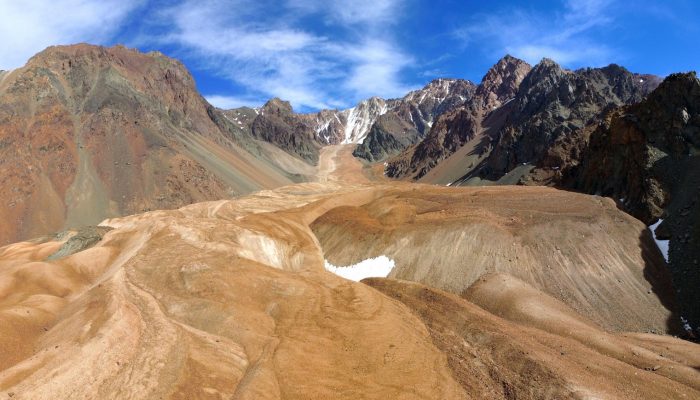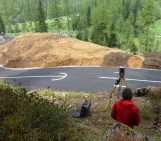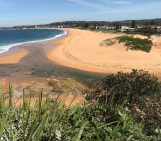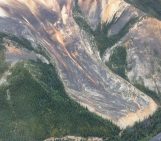
Take some ice, mix in some rock, snow and maybe a little mud and the result is a rock glacier. Unlike ice glaciers (the ones we are most familiar with), rock glaciers have very little ice at the surface. Looking at today’s featured image, you’d be forgiven for thinking the Morenas Coloradas rock glacier wasn’t a glacier at all. But appearances can be misleading; as Jan Blöthe (a researcher at the University of Bonn) explains in today’s post.
The picture shows the Morenas Coloradas rock glacier, a pivotal example of actively creeping permafrost (ground that remains frozen for periods longer than two consecutive years) in the dry central Andes of Argentina. The rock glacier is located in the “Cordon del Plata” range, some 50 km east of the city of Mendoza.
The rock glacier fills the entire valley and slowly creeps downslope creating impressive lobes and tongues with steep fronts. With more than 4 km length, the Morenas Coloradas is one of the largest rock glaciers of the central Andes.
Taken from a drone, the picture looks straight up the rock glacier into the main amphitheatre-like valley formed by glacial erosion located at ~4500 m.a.s.l. From there, large amounts of loose debris are moved down the valley at speeds on the order of a few meters per year. The creeping process forms tongues of material that override each other, producing the characteristic surface with steps, ridges and furrows.
The central Andes of Argentina are semi-arid, receiving less than 500 mm of precipitation per year, mainly falling as snow during the winter. The region is famous for its wines, which are grow in the dry Andean foreland that is heavily dependent on meltwater from the mountains. How much of this meltwater is actually stored in ice-rich permafrost landforms is unknown.
As opposed to ice glaciers, rock glaciers show a delayed reaction to a changing climate, as large amounts of debris cover the ground ice, isolating it from rising air temperatures. With large areas located above the lower altitudinal limit of mountain permafrost of ~3600 m.a.s.l., the central Andes of Argentina might store significant amounts of water in the subsurface.
Using mainly near-surface geophysics, our research tries to quantify the water storage capacities in the very abundant and impressive rock glaciers of the region. The Morenas Coloradas rock glacier is of special importance in this regard, as first geophysical measurements date back to the 1980s. Since then, active layer thickness has dramatically increased in the lower parts of the rock glacier, indicating that also the ground ice of the permafrost domain of the central Andes is suffering under the currently warming climate.
A final remark: Thanks goes to the entire team of this research project, namely Christian Halla, Estefania Bottegal, Joachim Götz, Lothar Schrott, Dario Trombotto, Floreana Miesen, Lorenz Banzer, Julius Isigkeit, Henning Clemens, and Thorsten Höser.
By Jan Blöthe, University of Bonn, Germany



